In January, I visited the site of the 2021–2022 Boulder County fires. The section that I visited is directly behind a huge fire station:
More shocking than the inequality that AOC and Bernie Sanders highlight, here’s an undamaged house right next to one that burnt down.
(A friend in the area said that homeowners of undamaged houses have nonetheless been able to get insurance companies to pay out hundreds of thousands of dollars per house to address carcinogenic chemicals that got onto and into their houses.)
These cars were likely insured, but they’re going to be tough to replace given the perennial “chip shortage.”
There is a community center with gym and pool directly across the street from this scene of destruction:
Miscellaneous images:
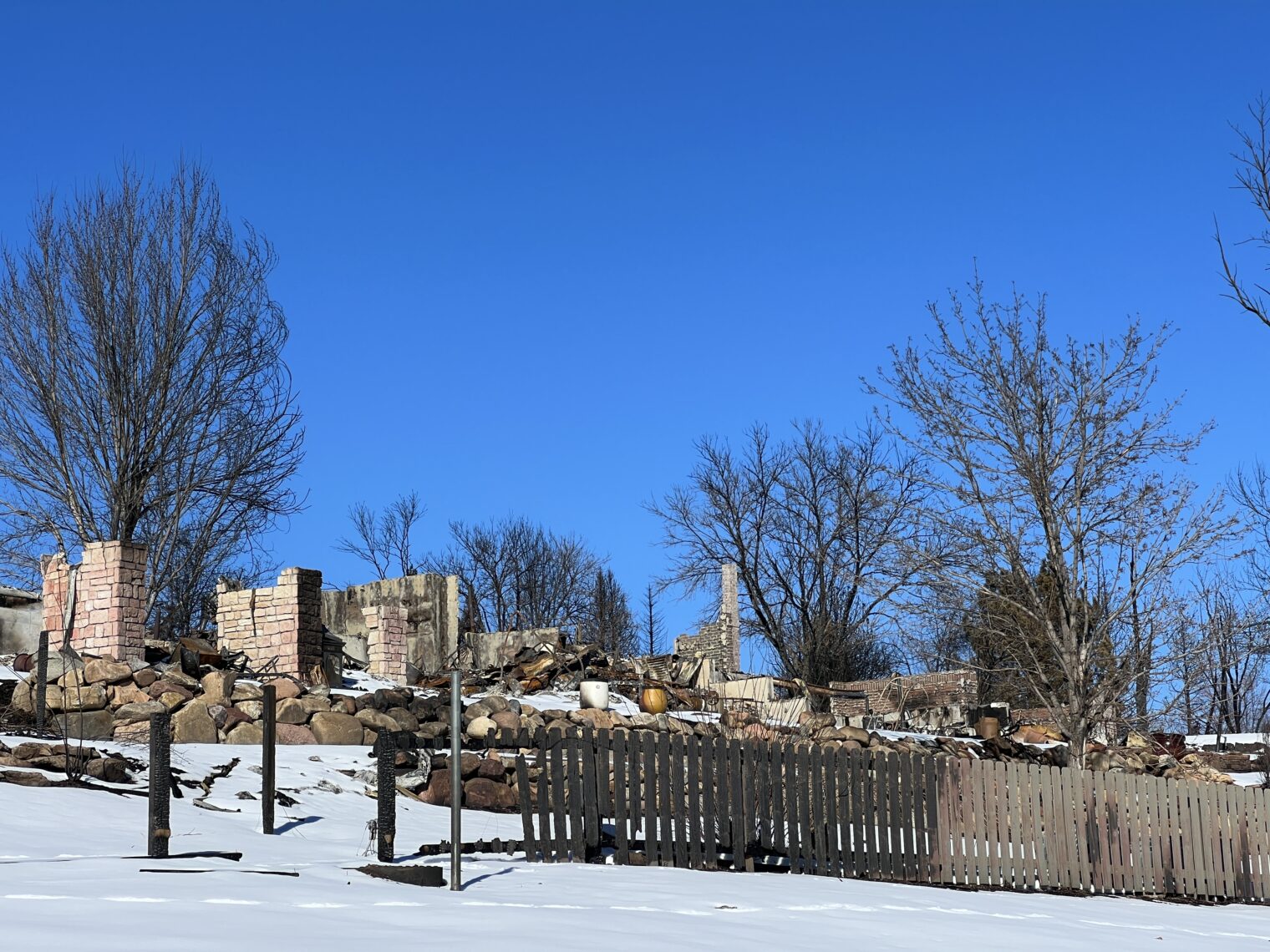
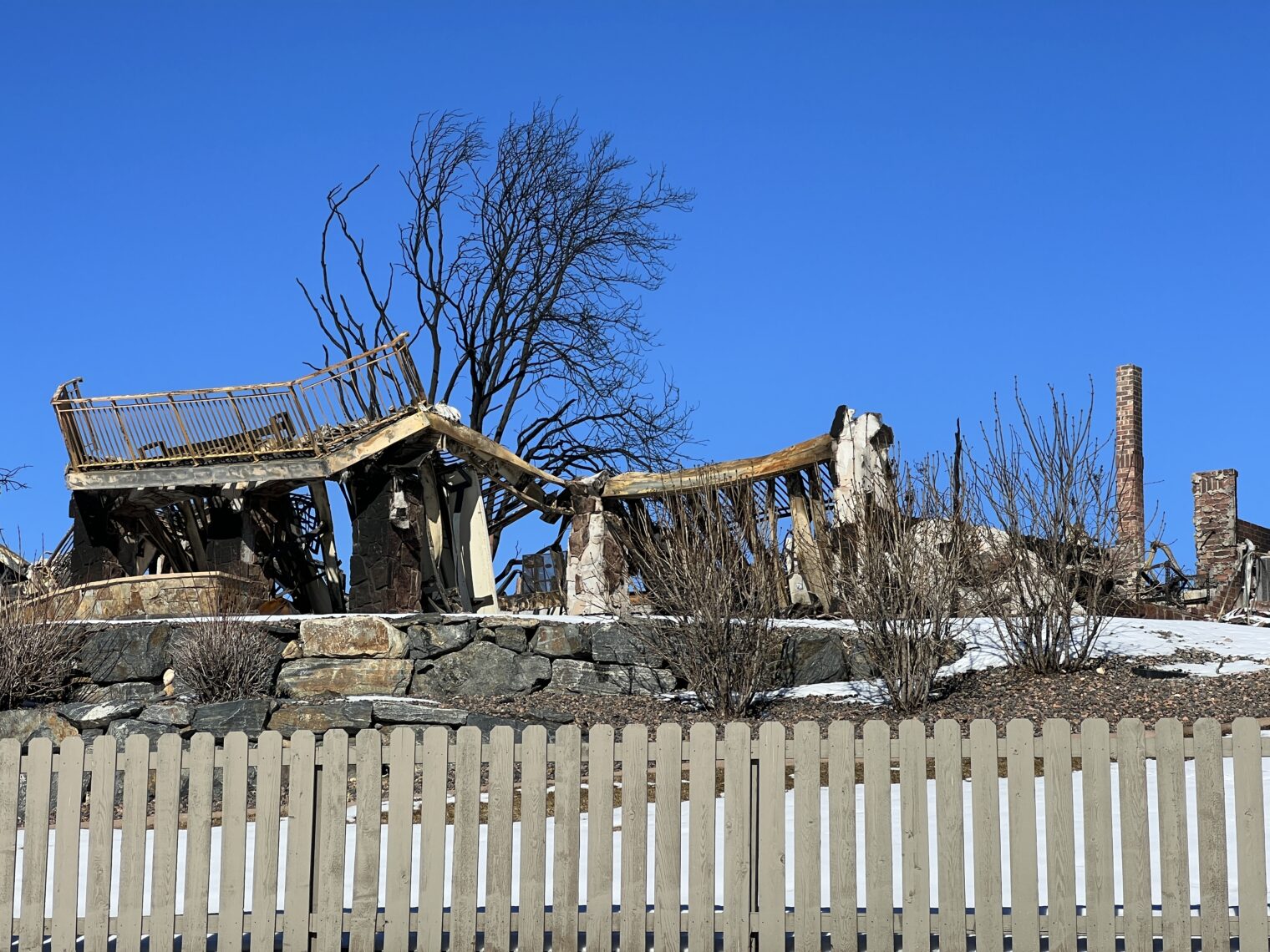
My friend who lives in a burned neighborhood (but his house was spared) said that people got away in their pajamas and had no time to rescue anything from within their homes. “I told my neighbor, who is about the same size, to just come and grab anything that he wanted from my closet,” he said.
Builders are quoting $500 per square foot to rebuild, which translates to $1 million for a modest 2,000 square foot house. Hardly anyone is insured to that extent, so it is unclear what will happen (government bailout?).
The cost of building a house in Colorado raises the question of how the U.S. will house the next 103 million migrants and their children (see “Modern Immigration Wave Brings 59 Million to U.S., Driving Population Growth and Change Through 2065” (Pew, 2015) for a calculation that 73 million folks who needed housing were added “due to 1965-2015 immigration”). Americans who earn at the median wage cannot afford the construction cost of a new house (see City rebuilding costs from the Halifax explosion for how this was true in 2019, before the inflation of 2021). Colorado itself is not handling immigrants, whether from other states or foreign nations, gracefully. Everyone with whom I talked said that the state had become overcrowded and was a far more pleasant place to live 15 or 20 years ago (4.1 million people lived in CO in 2000; it is currently nearly 6 million). Traffic in Denver was jammed from about 3 pm to 7 pm on a Friday. From 4:39 pm:
Colorado apparently cannot afford to build the highway network that it needs to support the population that it currently has, but is adding more people by the day.
Related:
- “Census: Front Range Cities And Suburbs Surge As Colorado’s Population Booms By Nearly 750,000 Over Last Decade” (state-sponsored Colorado Public Radio)
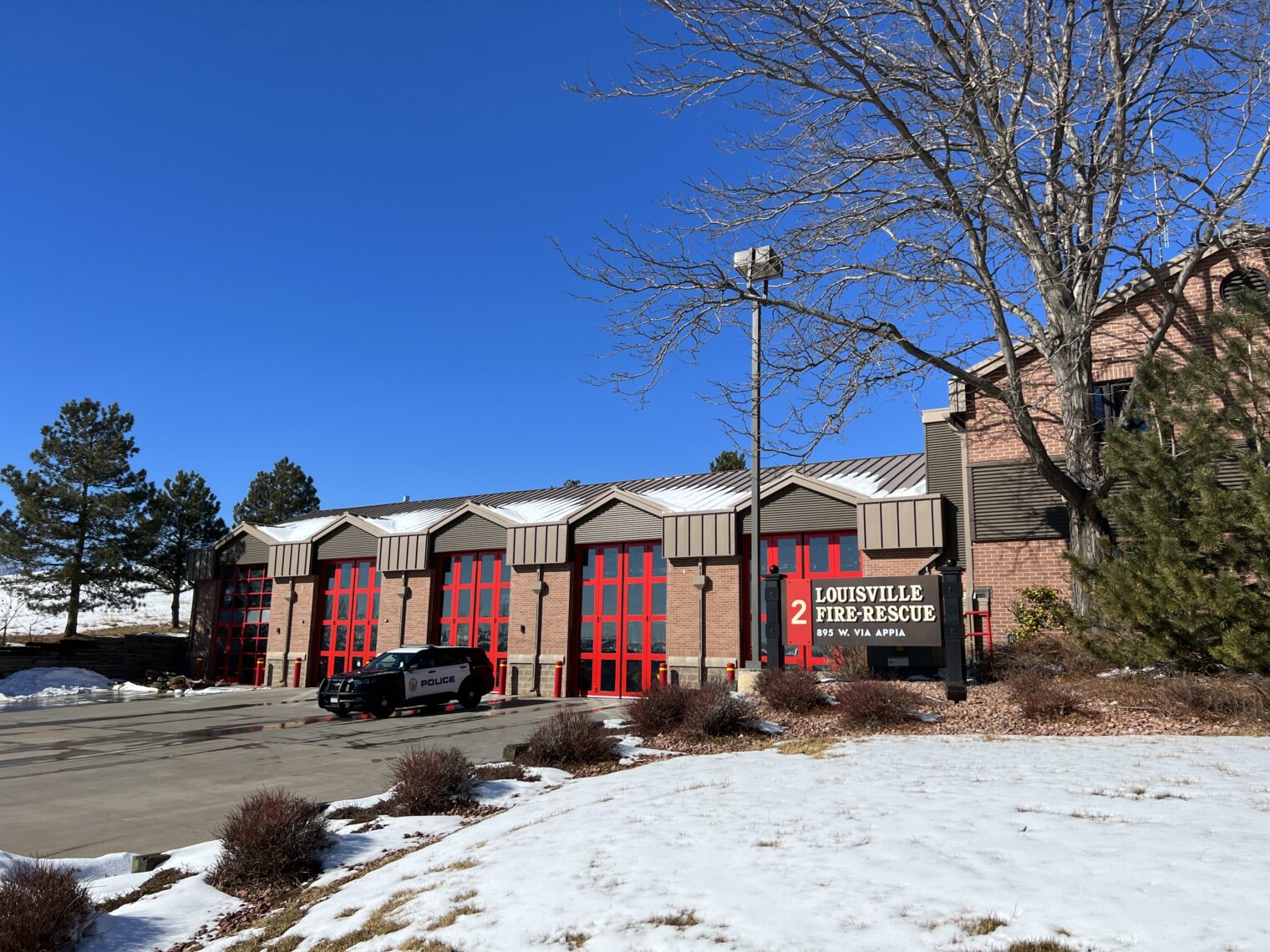

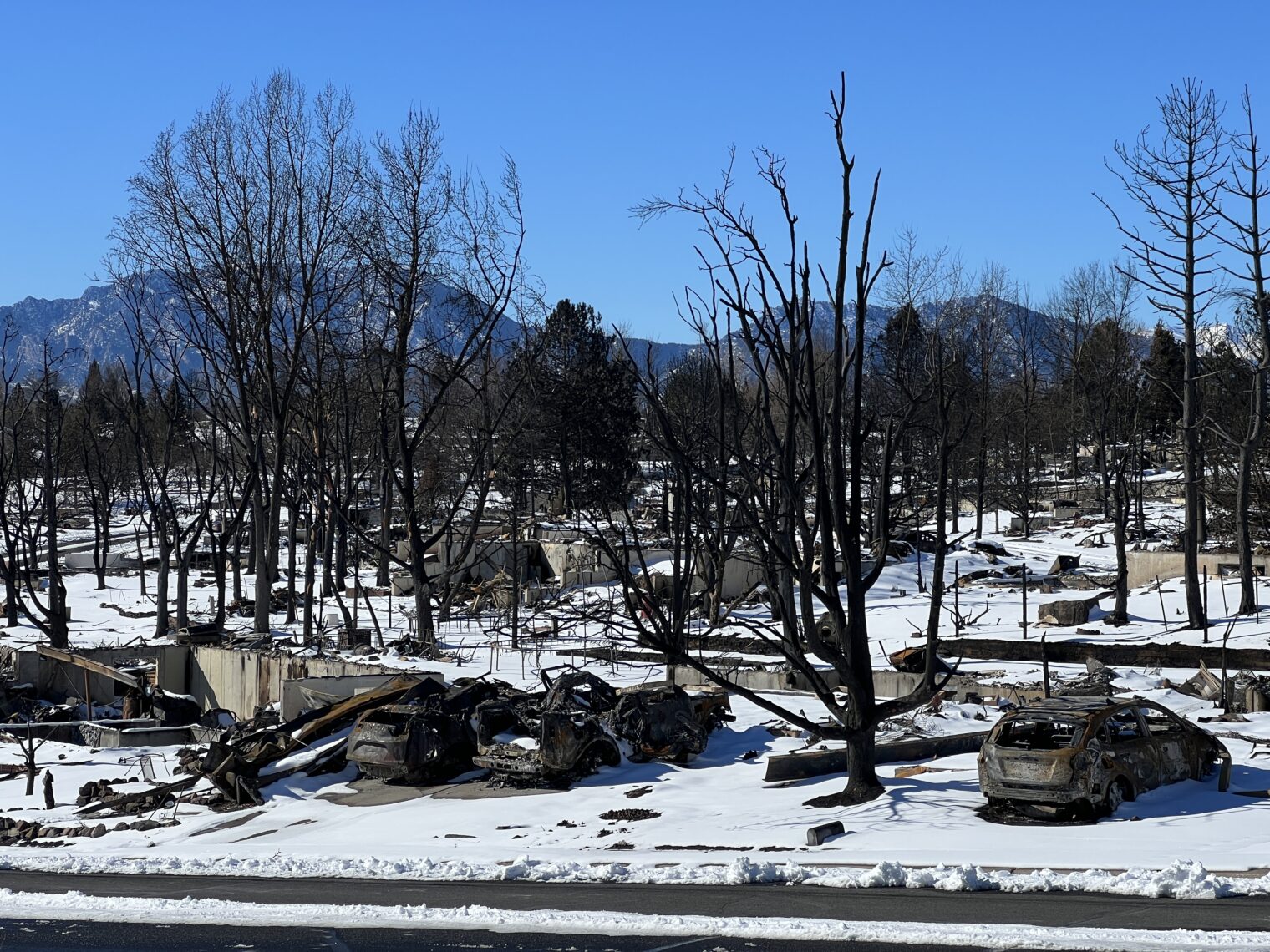
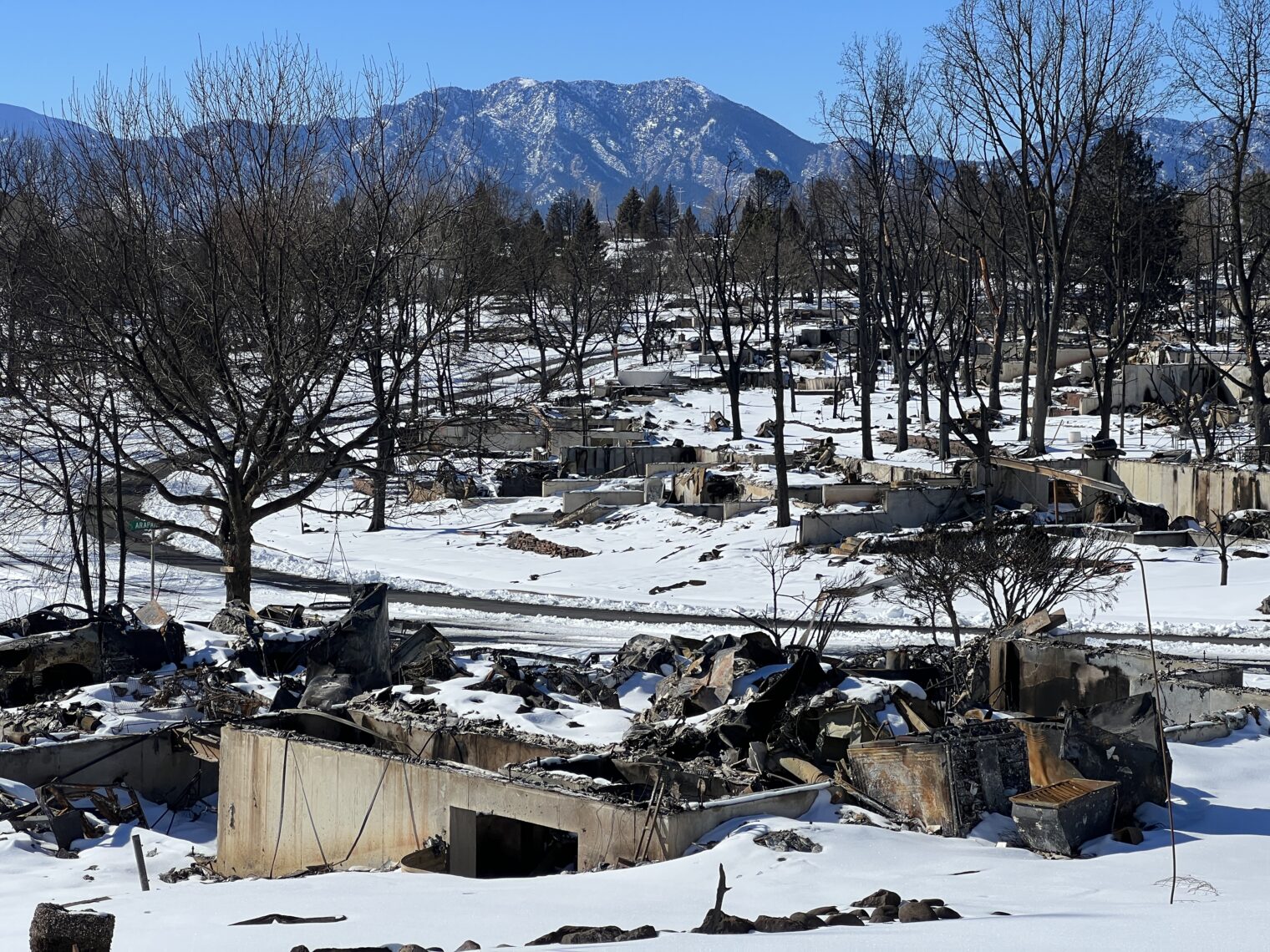
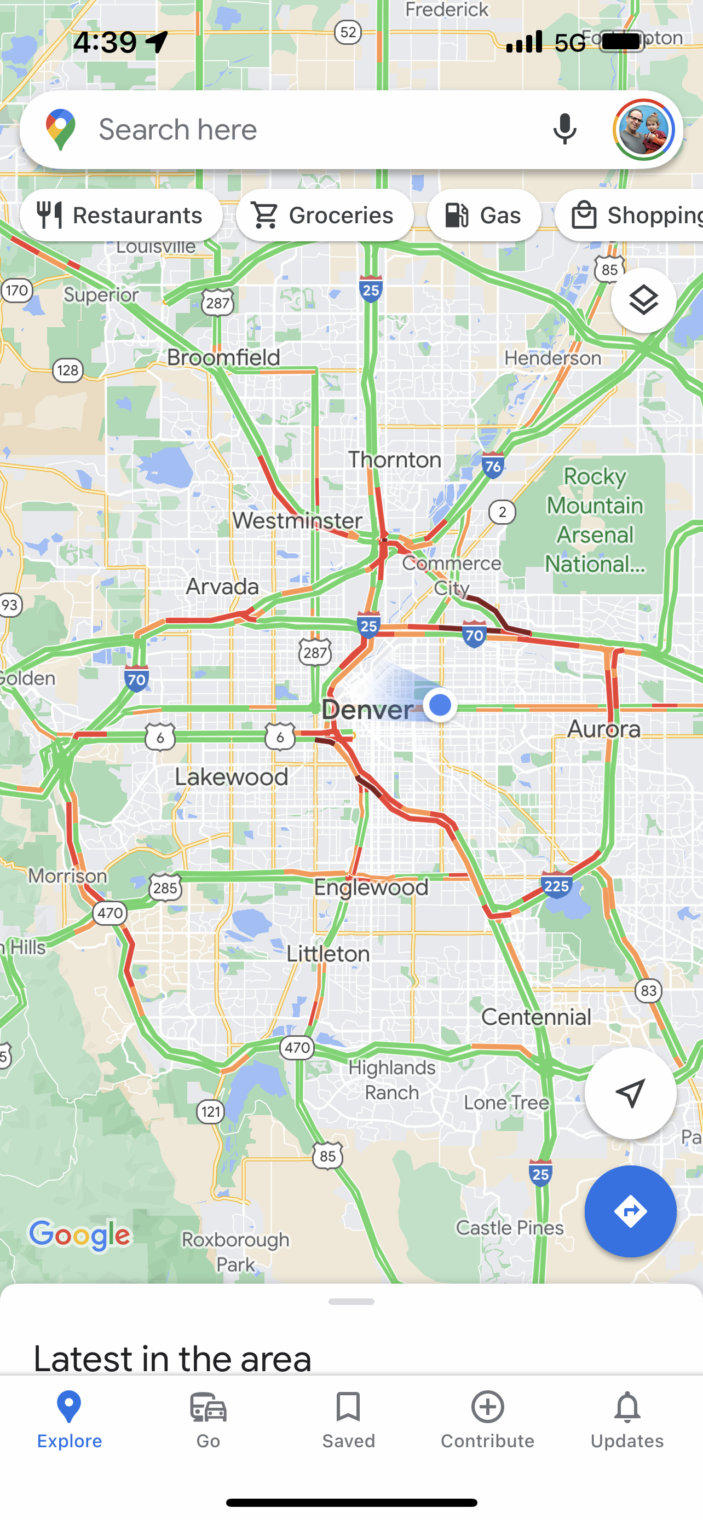
That traffic doesn’t look too bad. Covid helped improve the traffic / commuting situation at least for a little while. The next 100 million migrants and their children can take up in more urban high density apartments surrounded by concrete and freeways where it’s less prone to wild fires at the urban wildland interface.
Everyone you talked to is correct, a far less pleasant place to live. But growth is supposed to be good, and pay its own way, right? And cloth masks work.
Maybe time to up and leave, like you did from Maskachusetts to the Florida Free State. I think I’d rather head to The Last Best Place, ie Montana.
Paul B: it is interesting how the “growth pays its own way” idea has survived for nearly 60 years following the Great Society expansion of government welfare, Since the mid-1960s there hasn’t been any reason to assume that an additional human will turn into a net taxpayer, much less someone who will pay enough taxes to defray the cost of infrastructure expansion (see https://philip.greenspun.com/blog/2017/04/12/how-much-would-an-immigrant-have-to-earn-to-defray-the-cost-of-added-infrastructure/ ), yet we just continue with that assumption.
re: “growth pays its own way”
A twitter thread a few days ago related to the topic has image clips from a book showing some graphs highlighting the issue, below is just the text description. It suggests the problem is with cities pre-building infrastructure claiming the later growth will pay its own way and it doesn’t… .vs. cities where private growth occurs first and then infrastructure starts to arise incrementally paid for by the growth.
https://twitter.com/devonzuegel/status/1491451999963193349
“when cities develop incrementally, new neighbors = more capacity to take collective action
but these days, cities equip land with infrastructure *before* private development. this saddles the community with liabilities of questionable value & rouses hostility towards newcomers
every city planner & mayor should read @StrongTowns’ excellent book, which explains how the dominant development model in US cities is a decades-long Ponzi scheme:
I realize “Ponzi scheme” is an extreme claim, but once you understand American municipal finance, it’s hard to call it anything else
the basic mechanism is this: new growth gives governments “cash in the short term in exchange for taking on unpayable, long-term liabilities” ”
The book it links to, which I haven’t read:
https://www.amazon.com/gp/product/1119564816/
“Strong Towns: A Bottom-Up Revolution to Rebuild American Prosperity Hardcover – Illustrated, October 1, 2019
by Charles L. Marohn Jr.
…Presenting the foundational ideas of the Strong Towns movement he co founded, Charles Marohn explains why cities of all sizes continue to struggle to meet their basic needs, and reveals the new paradigm that can solve this longstanding problem.
Inside, you’ll learn why inducing growth and development has been the conventional response to urban financial struggles―and why it just doesn’t work. New development and high risk investing don’t generate enough wealth to support itself, and cities continue to struggle.”
philg: Thanks for that link. Some ideas never seem to die, this one just keeps going, probably due in some part to the old “Follow the money” explanation.
RealityEngineer: Thanks for the book recommendation, I look forward to understanding the new paradigm.
LOL so Colorado with 6 million people over 269,000 km2 (population density 19.9/km2) is “overcrowded,” yet Switzerland does quite well with 8.5 million people over 41,000 km2 (population density 219/km2).
If Colorado were a nation, it would around the 197th most densely populated country, somewhere between Urugauy and New Zealand. So crowded! https://worldpopulationreview.com/
Commence rationalizations and red herrings in 3….2……1………
Can you inform us where your blog is, so we can read your output?
Switzerland, like almost all of Europe, does not do well at all. The super rich buy up Gstaad, St. Moritz, Davos etc. It is nearly impossible to find decent apartments (or any at all) for the middle class anywhere in Switzerland.
The whole myth about Europe doing well seems to originate from these interest groups:
1) The super rich or children of super rich with too much time on their hands.
2) Children of middle class parents who are woke and have no clue about the real life.
3) Students and others in government subsidized housing. This is quite a large group in Europe, and of course a single parent who receives alimony and practically free housing will inform the Internet that Europe is Nirvana.
4) A huge group of Internet users who want to immigrate to Europe. They outnumber Europeans by far and have enough accounts on social media to censor and flag dissenters (this post would be deleted on most platforms).
5) I sometimes suspect that large Silicon Valley corporations have content farms in the Philippines to shape public “discourse” and flag dissenters.
But you’ll have it your way. Recently Eric Schmidt (who presumably is housed and has private security even if the 2nd amendment is abolished) extolled the virtues of immigration on the Ben Shapiro show and Shapiro did not ask any uncomfortable questions.
Anon: I noticed the same thing circa 1990 in Italy. I stayed with a family in a big apartment in a nice part of Rome, but by no means in the center. I learned that the son, who had just finished medical school, would have to work for 20 years at an MD’s wage, saving 100% of his salary, in order to purchase a comparable apartment. (i.e., if you didn’t inherit a nice place to live it was almost impossible to obtain one via what we would call W-2 wages).
Historians noted the same thing about Colonial America. Fabulous wealth via land ownership (well, land theft) was available to people who had been struggling to put bread on the table back in England. The higher population density of Europe made for very tough conditions among those who were not in the nobility.
The typical middle-class European lives like an American on welfare if we look at square footage of housing, car ownership, etc. Check out http://shrinkthatfootprint.com/how-big-is-a-house for square meters of house/apartment per person in various countries (UK: 33; US: 77). Based on a Google search, Switzerland is at about 46 square meters.
I think the idea that Americans who advocate for open borders and, therefore, unlimited low-skill immigration, is that the U.S. can have a population density similar to Europe’s or China’s and yet the typical American can have 2X the standard of living of what Europeans and Chinese enjoy.
All of what Anon and Philip said. Apartments in NYC, an hour to two hours of commute from place of employment ( if it is in the same city, in old times most of my friends who bought in one of the outer borough had to change jobs and commute to NJ/CT/Long Island, there was weird jinxed streak connected to local real estate purchases), costs at least twice as much per square foot and has less footage then McMansion or just a Colonial house wit front/back yards and garages) in suburbia.
Washington passed its 1st capital gains tax just 2 years after the Calif* exodus began. Justice is swift for the formerly non Calif* states & we’re coming for GREENSPUN next.
The real issue is real, not corporate imaginative, skill gap. $500/ft per square feet – I would drop what I am doing and go into construction. In my hood build prices were below $100/ft. Uncle Google saz it is $100 – $150 on average now. https://homeguide.com/costs/cost-to-build-a-house
It may be indeed $500/foot. Not sure whom to believe.
perplexed: Here in Florida, the rule of thumb is $300/ft. as a starting point and going up to $400 or $500/ft. if you want fancy finishes and extra features. I think the developers who build 50 or 100 houses at once are doing it for less.
https://www.kolterhomes.com/new-homes/artistry-palm-beach/homes/
is a new development in an area where land isn’t worth much (and where the houses are built on top of each other so you’re not going to be consuming much land). The houses seem to be priced at about $350/ft so maybe the construction cost is down at $250?
Here are cheaper houses in Florida for half for per square foot price or less https://www.kbhome.com/new-homes-jacksonville-st-augustine-area/whiteview-village
Home insurance is usually for double or triple of original house value amount, at least in cases I know. So those hurt by the fire should be protected financially by home insurance, I hope.
perplexed: It looks like those houses are selling at $200/sq ft. plus the cost of the lot itself (the “lot premium” which they say might be $0, but usually isn’t). When I wrote “here in Florida” I probably should have said “here in south-east Florida”. Labor costs probably are lower in central and northern FL.
Philip, my limited experience with house construction may not reflect what is happening in south-east Florida but I believe wage for single home construction workers is about the same for different regions. Ages ago, based on under$100/ sq. ft house price, if was $25 – $50/hour, with medium being $35-$40/hour, it was gig work and workers moved around the country. Most of the price difference is in carpeting/flooring/roofing/finishing materials. House frames are of the same quality 4x4s, same foundation for the concrete. More expensive means more artsy, not necessary longer lasting.
I believe there is huge arbitrage opportunity for both home builders and construction workers in Colorado at $500/sq. ft .
Hmm… the cost in Colorado was $400/ft in June 2021 (see https://denver.cbslocal.com/2021/06/11/lumber-prices-grand-county-rebuilding-east-troublesome-fire-homeowners-insurance/ ). By February 2022, the same number was mentioned in https://coloradonewsline.com/2022/02/03/marshall-fire-survivors-face-high-costs-supply-shortages-as-they-look-to-rebuild/
So maybe my friend’s friend was talking about higher quality houses when he said $500/ft.
Yes, it similar to when multi-millionaire elites build houses on the Atlantic shore and rebuild them using federal natural disaster funds it every time when periodic storm floods it (who knew there were storms in the ocean!). If cost is $400/sq ft, insurance should be sufficient to cover $500/ sq ft. Seems that $400/sq ft reflects luck of real vs imaginative skills of new repatriates to Colorado and cost of government there. 4x4s are literally sticking out of the earth in Colorado.
> Traffic in Denver was jammed from about 3 pm to 7 pm on a Friday. From 4:39 pm…
Well, if they’re going to be stuck in traffic of that magnitude, at least we know from your recent reports that a 182-hp Subaru Outback with a sketchy and maybe slipping CVT developing under 150 real world hp due to elevation should be adequate for the prevailing speeds!
Somehow that’s not much to make a rousing Subaru promotional piece out of, though…I wouldn’t suggest it!
“The 2022 Subaru Outback: Fast Enough for Denver Traffic!”
Alex: LMAOL!